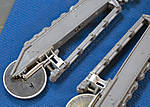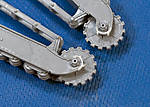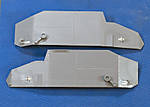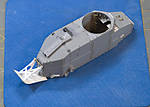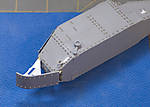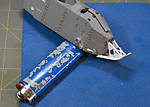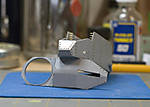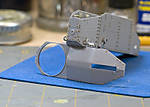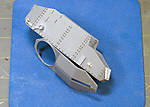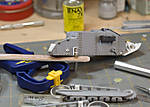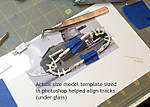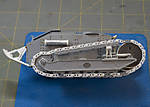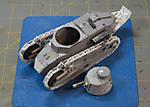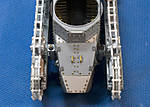1⁄35Renault FT-17
introduction
The Renault FT-17 is a French WWI light tank. It was revered as a revolutionary tank by design. The armed and fully rotating turret, rear-set engine compartment & front-set driver compartment came to be an optimum design layout for modern tanks. FT-17 design and concept began in May, 1916. Prototypes were slowly refined and ordered into production during the first half of 1917. Only 84 were produced during that year - but 2,697 were delivered before the end of the war. 3,177 of know unit production occurred in many contries after World War I. Poland, Japan, Nazi Germany, France, Brazil & the United States were only a few countries out of the many that produced the tank. Curiosities of the actual meaning of "FT" exist. "Faible Tonnage" or "Franchisseur des Tranchées" (trench crosser) are supposed meanings. In reality every Renault prototype was given a designation code - this particular tank design was FT-17. It had a surprisingly long career. It saw service from 1917 to 1945. Today around 40 FT-17’s survive in various museums across the world. Two FT-17’s at the Musée des Blindés in France, are in running condition.MODEL, AFTERMARKET PARTS & REFERENCE
From my knowledge there are 2 kits to choose from in 1/35th scale. One is resin, the other is injection molded by RPM in France. I choose the latter because of the availability of aftermarket add-on’s and my familiarity with plastic. I used several aftermarket products to improve RPM’s crude kit. They include but are not limited to: a photo etch set from Eduard (helped with the small details) and rivets of both resin and brass (to replace many kit-molded rivets). RPM’s own injection molded FT-17 track links improved the running gear. Kudos to www.scalehardware.com for producing exceptional scale rivets. Keep this company in mind if your build demands hundreds of rivets to place. They are expensive - but remember, not only are you buying convenience and durability - but time. No other rivet product will do if you’ll spend more time fumbling than building. Metal & plastic scratchbuilding materials were also used in most sub-assemblies throughout the model. Reference material comprised of 100% internet pictures. Good Adobe Photoshop skills provided decent quality photos from 72 ppi web pics. Most reference photos I found were black and white - few were in color. Much imagination is required to complete a quasi-accurate FT-17 model based on limited resources. I later (after building) found a splendid book in Squadron.com all about the FT-17 tank - Blasted!CONSTRUCTION
Construction began in May, 2007 and lasted until January, 2008. As touched on earlier, each sub-assembly and/or major part had to be either heavily modified or scratchbuilt. RPM’s plastic is on the soft side - and the molding quality is on the unacceptable end! The primary inspiration or drive for the kit was to replace every conceivable kit rivet and bolt with aftermarket pieces. Early in the building I learned that the body of the tank was most realistic to re-rivet - but the entire kit was not. Can you believe that the tank body has over 400 rivets alone! See in-progress photos for "before" and "after" shots of the riveting process.Copyright ©2021 by Paul Hargett. Images and/or videos also by copyright holder unless otherwise noted. The views and opinions expressed herein are solely the views and opinions of the authors and/or contributors to this Web site and do not necessarily represent the views and/or opinions of Armorama, KitMaker Network, or Silver Star Enterrpises. All rights reserved. Originally published on: 2008-05-30 00:00:00. Unique Reads: 31647






